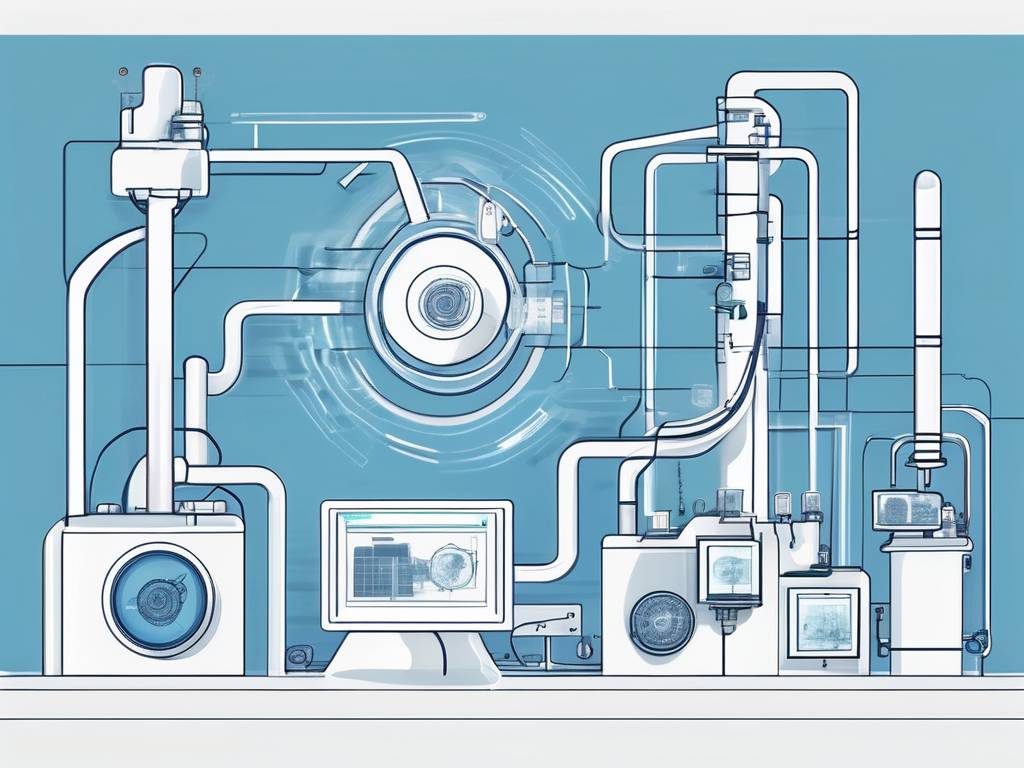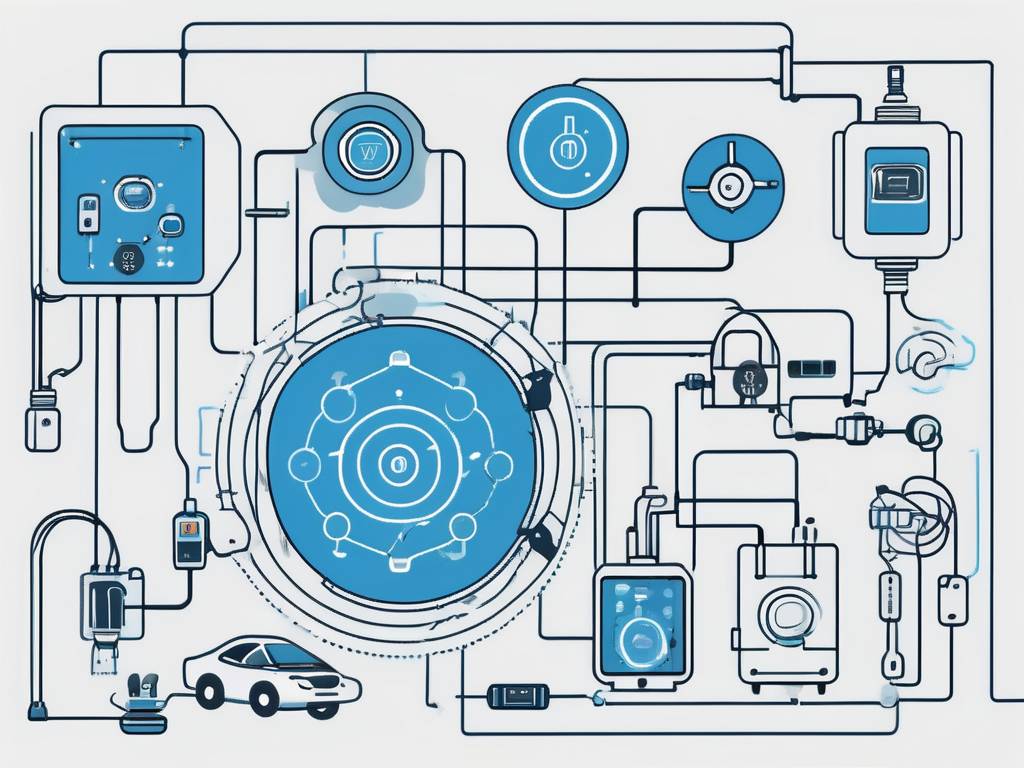IoT Interoperability: Internet of Things Explained
The Internet of Things (IoT) represents a complex network of interconnected devices, systems, and services that communicate and exchange data with each other. The applications of IoT technology span various industries and sectors, bringing about a significant transformation in the way we live and work. However, the success and efficiency of IoT are significantly influenced by interoperability, which is the ability of different IoT systems and devices to work together seamlessly.
Interoperability covers a wide array of elements, including data sharing, device compatibility, system integration, and a unified user interface. It is the cornerstone of IoT, enabling different devices and systems to interact and collaborate, thereby creating a cohesive and efficient IoT ecosystem. This article offers insights into IoT interoperability, highlighting its significance, the challenges it presents, and strategies to address these challenges.
Understanding IoT Interoperability
IoT interoperability refers to the ability of different IoT devices and systems to work together, regardless of their make, model, operating system, or network. It is about ensuring that these devices and systems can communicate and exchange data with each other seamlessly. Interoperability is a critical aspect of IoT, as it enables the devices to function as a unified system, rather than individual entities.
However, interoperability is not just about device-to-device communication. It also involves system-to-system and device-to-system communication. For instance, a smart home system should be able to communicate with the home security system, the HVAC system, and the lighting system, among others. Similarly, a wearable fitness tracker should be able to communicate with the user’s smartphone, the cloud, and the healthcare provider’s system. This level of interoperability ensures that various devices and systems can collaborate and work together to provide a seamless and efficient user experience.
Levels of IoT Interoperability
IoT interoperability can be categorized into three levels: syntactic, semantic, and organizational interoperability. Syntactic interoperability refers to the ability of systems to exchange data and interpret the structure of the data. It involves the use of data formats, communication protocols, and APIs for data exchange. Semantic interoperability, on the other hand, is the meaning of the data. It ensures that the systems not only exchange data but also understand the meaning of it.
Organizational interoperability is about the alignment of business processes and workflows. It ensures that the systems can work together to achieve a common goal or objective. For instance, in a smart city, the traffic management system, the public transportation system, the emergency services, and the city administration should be able to work together to ensure smooth traffic flow, timely response to emergencies, and efficient city management.
Importance of IoT Interoperability
Without interoperability, IoT devices and systems would operate in isolation, reducing efficiency and consistency. By enabling seamless communication between connected devices, users can manage different devices without the need for multiple applications or interfaces, simplifying the user experience. This integration not only streamlines operations but also encourages the adoption of new technologies, promoting the growth of IoT ecosystems without significant compatibility issues.
Interoperability plays a crucial role in enhancing data analytics and decision-making, especially in healthcare, by collecting data from various sources for comprehensive analysis. Furthermore, it boosts security within IoT ecosystems by facilitating the efficient distribution of updates and alerts among devices, thereby establishing a stronger defense against threats.
Challenges in IoT Interoperability
Despite its critical role, attaining interoperability in IoT presents numerous challenges, including technical hurdles, issues with standardization, and concerns related to security and privacy.
Device Compatibility
The diversity in IoT devices, including differences in make, model, operating system, and network capabilities, leads to compatibility issues. This diversity can lead to communication barriers, preventing interaction and collaboration among devices.
Network Connectivity
The situation is further complicated by the variety of network technologies (ex. Wi-Fi, Bluetooth, Zigbee, cellular networks) utilized by IoT devices. This not only causes connectivity challenges but also disrupts the flow of communication and data exchange.
Standardization Challenges
The lack of universal standards for devices, data formats, and APIs complicates interoperability. The fragmented IoT landscape, characterized by proprietary standards, impedes seamless device communication and operation.
Security & Privacy
IoT devices face risks of security breaches and privacy violations, necessitating stringent data protection safeguards. The diverse legal and regulatory frameworks for data protection globally further complicate the enforcement of security and privacy measures.
Solutions to IoT Interoperability Challenges
To achieve a cohesive, secure, and efficient IoT environment, addressing interoperability challenges will be critical. This will involve the implementation of robust security protocols and the standardization of communication frameworks.
Security Protocols
The future will see a focus on enhancing the security and privacy of IoT devices through end-to-end encryption. Comprehensive security frameworks, equipped with regular updates and patches, will be essential to safeguard against emerging vulnerabilities. Additionally, aligning these frameworks with international standards will address the complex legal and regulatory landscapes, ensuring a globally cohesive IoT security strategy.
Standardization
The creation of universal communication protocols is crucial for ensuring smooth interactions among IoT devices from various manufacturers and operating systems. Standardizing hardware and software specifications will enable these devices to connect and operate together, independent of brand or network. By establishing unified networking standards, the challenges of connectivity will be addressed, improving device interoperability. Emphasizing standardized data formats and APIs will facilitate data sharing and integration, fostering a more integrated and efficient digital ecosystem
Conclusion
IoT interoperability is a critical aspect of the Internet of Things, enabling different devices and systems to work together seamlessly. It encompasses a broad range of aspects, including device compatibility, system integration, data exchange, and user interface. However, achieving interoperability in IoT is a challenging task, due to various technical, standardization, and security challenges.
Tackling these challenges demands a united effort from all stakeholders to promote the creation of inclusive, comprehensive standards and dynamic security protocols that keep pace with the ever-changing IoT environment. Overcoming these obstacles will unlock the complete potential of IoT interoperability, setting the stage for a world of seamless connectivity.
Questions?
- What is IoT interoperability?Toggle questionIoT interoperability refers to the ability of different devices, platforms, or systems in an Internet of Things (IoT) ecosystem to seamlessly connect, communicate, and work together, regardless of their manufacturer or technology.
- Why is interoperability crucial in the IoT landscape?Toggle questionInteroperability is essential for creating a cohesive and efficient IoT environment. It allows devices from different vendors to collaborate, fostering compatibility, flexibility, and scalability in IoT deployments.
- What are common challenges in achieving interoperable IoT systems?Toggle questionImplementing interoperable IoT systems introduces challenges such as varied communication protocols, security risks, and disparate data formats. Efforts towards standardization and the deployment of robust IoT platforms are essential in addressing these challenges.
- Are there IoT interoperability standards?Toggle questionDespite the presence of several industry standards and protocols aimed at fostering seamless interoperability, such as MQTT, CoAP, and OCF, there isn't a single, universal standard that governs all IoT communications and interactions. This fragmentation can complicate the integration of devices from different manufacturers, as each may adopt different standards or versions of protocols. Efforts towards greater standardization and compatibility continue to be a focus within the industry to address these challenges.
- What role does security play in IoT interoperability?Toggle questionSecurity plays a critical role in IoT interoperability, ensuring that as devices from different manufacturers and systems communicate and work together, they do so safely and without compromising sensitive data. Effective security measures are essential to protect against unauthorized access and cyber threats, maintaining the integrity and confidentiality of data across interconnected devices.
- Is IoT interoperability only relevant for large-scale IoT deployments?Toggle questionNo, interoperability is beneficial for IoT deployments of all sizes. It provides flexibility, allowing businesses and individuals to choose devices that meet their specific needs without worrying about compatibility issues.
- How can businesses ensure long-term IoT interoperability?Toggle questionBusinesses should stay informed about emerging standards, invest in flexible and scalable IoT platforms, and collaborate with experienced IoT solution providers like WestLink to future-proof their interoperable systems.

 hello@westlink.com
hello@westlink.com  (866) 954-6533
(866) 954-6533  700 N Colorado Blvd,
700 N Colorado Blvd,







Comments